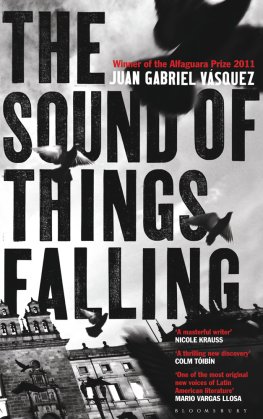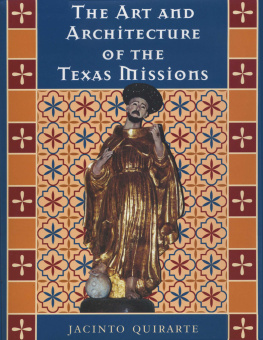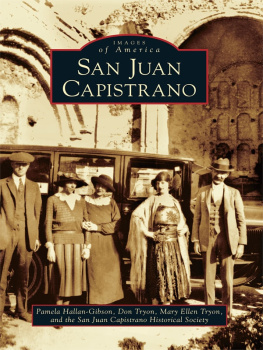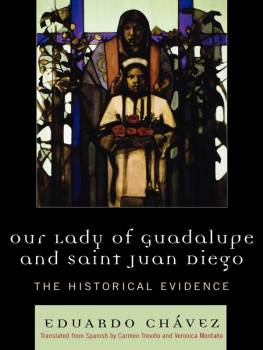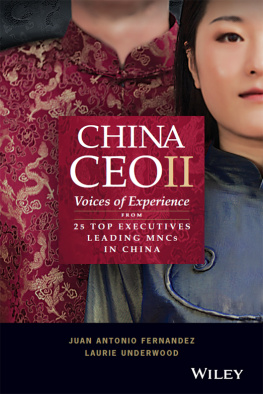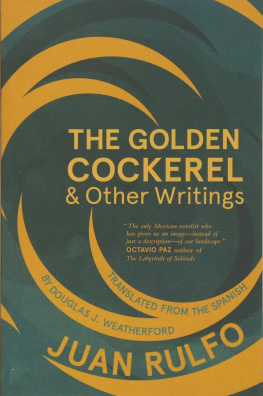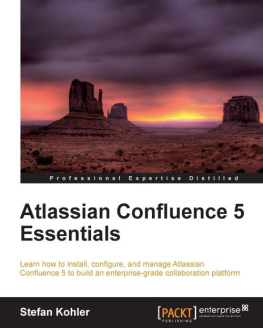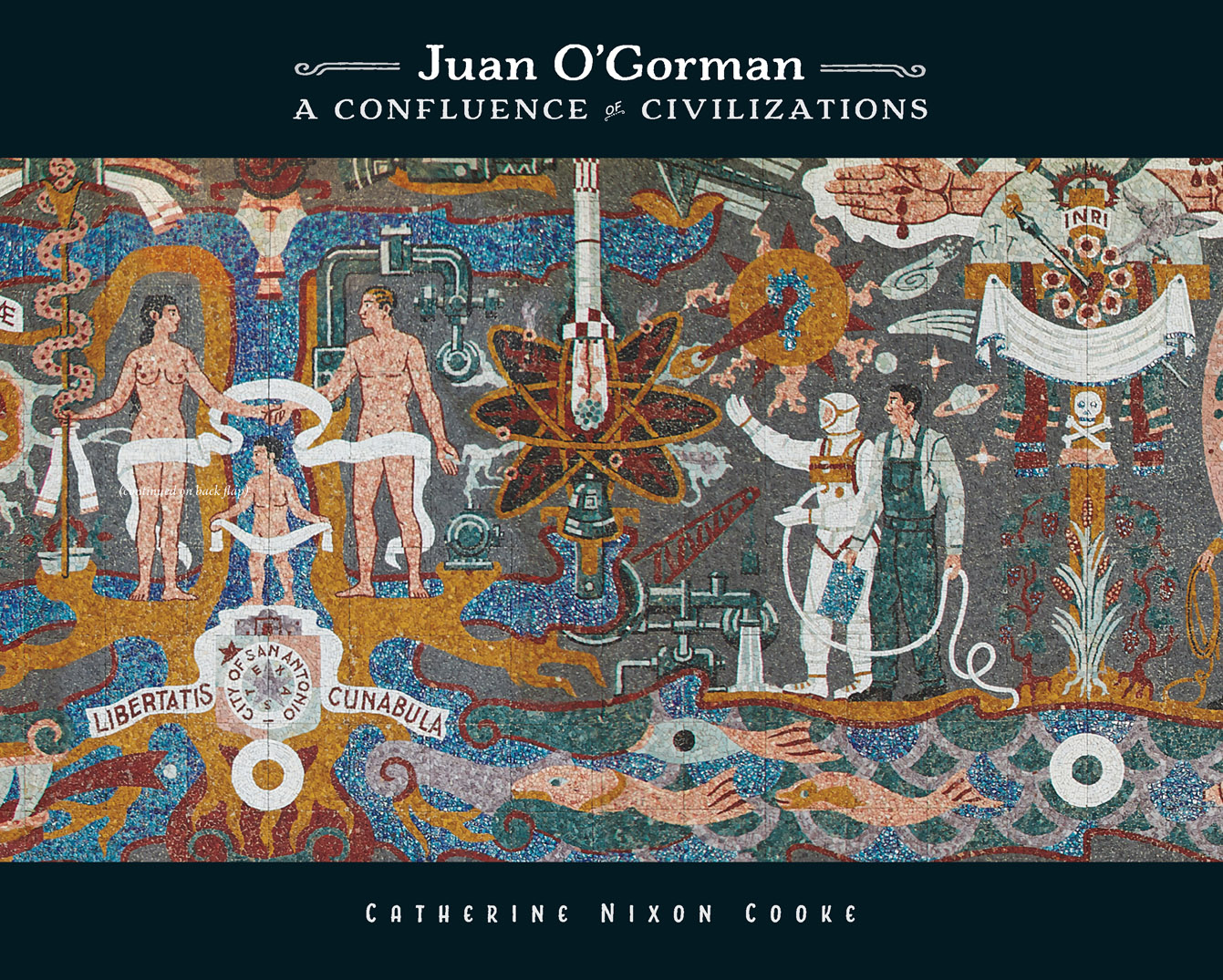
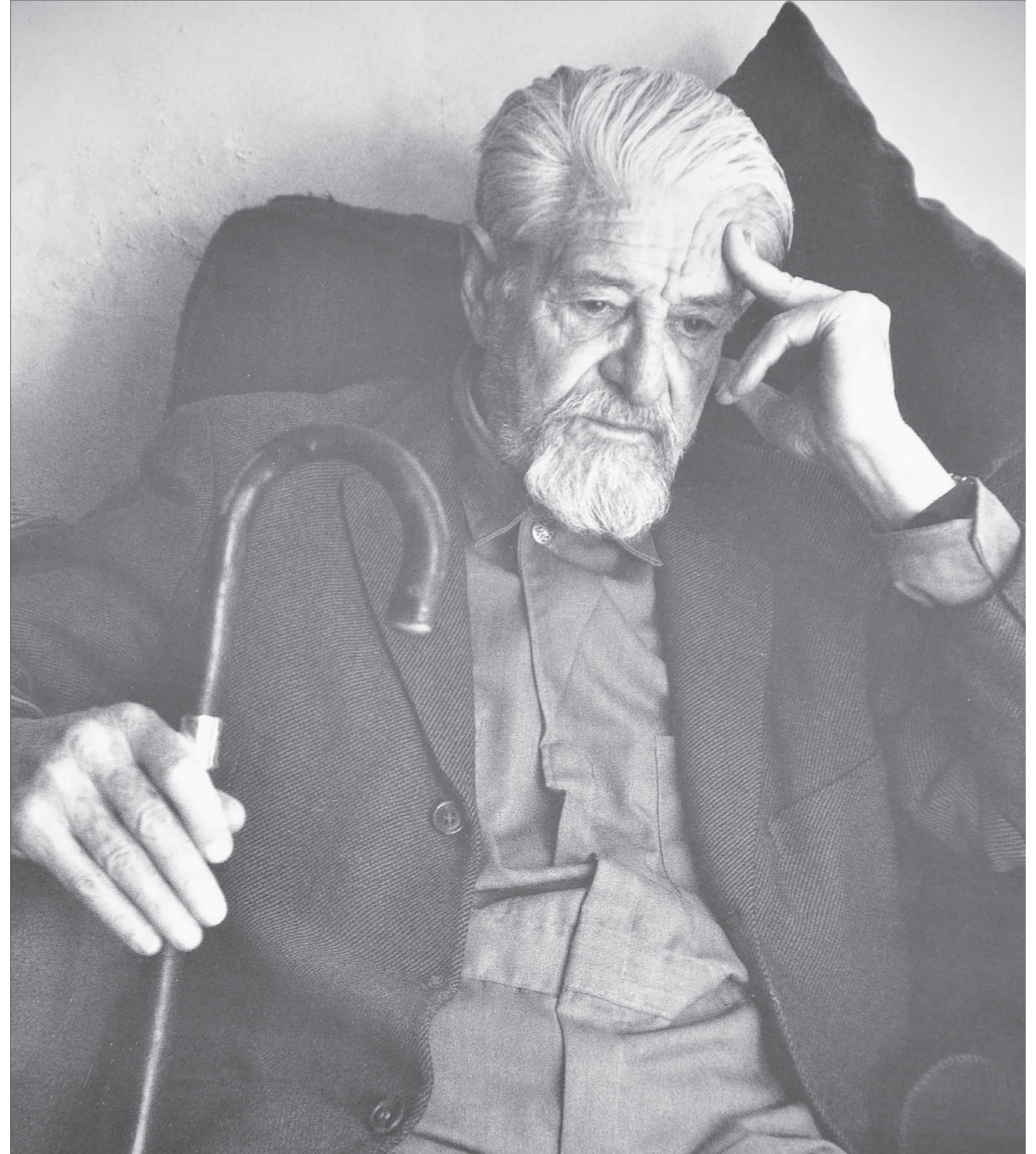


Published by Maverick Books, an imprint of Trinity University Press
San Antonio, Texas 78212
Copyright 2016 by Catherine Nixon Cooke
All rights reserved. No part of this book may be reproduced in any form or by any electronic or mechanical means, including information storage and retrieval systems, without permission in writing from the publisher.
Book design by BookMatters
Cover art: Confluence of Civilizations in the Americas, Juan OGorman, 19661968. Photograph by Christian Besson, Universidad Nacional Autnoma de Mxico (UNAM) Collection
ISBN 978-1-59534-798-5 ebook
Trinity University Press strives to produce its books using methods and materials in an environmentally sensitive manner. We favor working with manufacturers that practice sustainable management of all natural resources, produce paper using recycled stock, and manage forests with the best possible practices for people, biodiversity, and sustainability. The press is a member of the Green Press Initiative, a nonprofit program dedicated to supporting publishers in their efforts to reduce their impacts on endangered forests, climate change, and forest-dependent communities.
The paper used in this publication meets the minimum requirements of the American National Standard for Information SciencesPermanence of Paper for Printed Library Materials, ANSI 39.481992.
CIP data on file at the Library of Congress
20 19 18 17 16 | 5 4 3 2 1
For Flora Cameron Crichton,
who gave the Confluence of Civilizations mural to the City of San Antonio
and who has enhanced her community and beyond with her gifts of culture and beauty
(fold out) Confluence of Civilizations in the Americas covers more than twenty-five hundred square feet, comprised of natural stones from Mexico. Its message of diverse cultures coexisting to create a harmonious world is as powerful today as it was when Juan OGorman created the mural, between 1966 and 1968.

Table of Contents
Guide
Contents
MEXICO, 19051915
MEXICO CITY, 19201930
MEXICO CITY, 19301960
SAN ANTONIO, TEXAS, 19601970
SAN ANTONIO, TEXAS, 1968FOREVER
MEXICO, 19681982
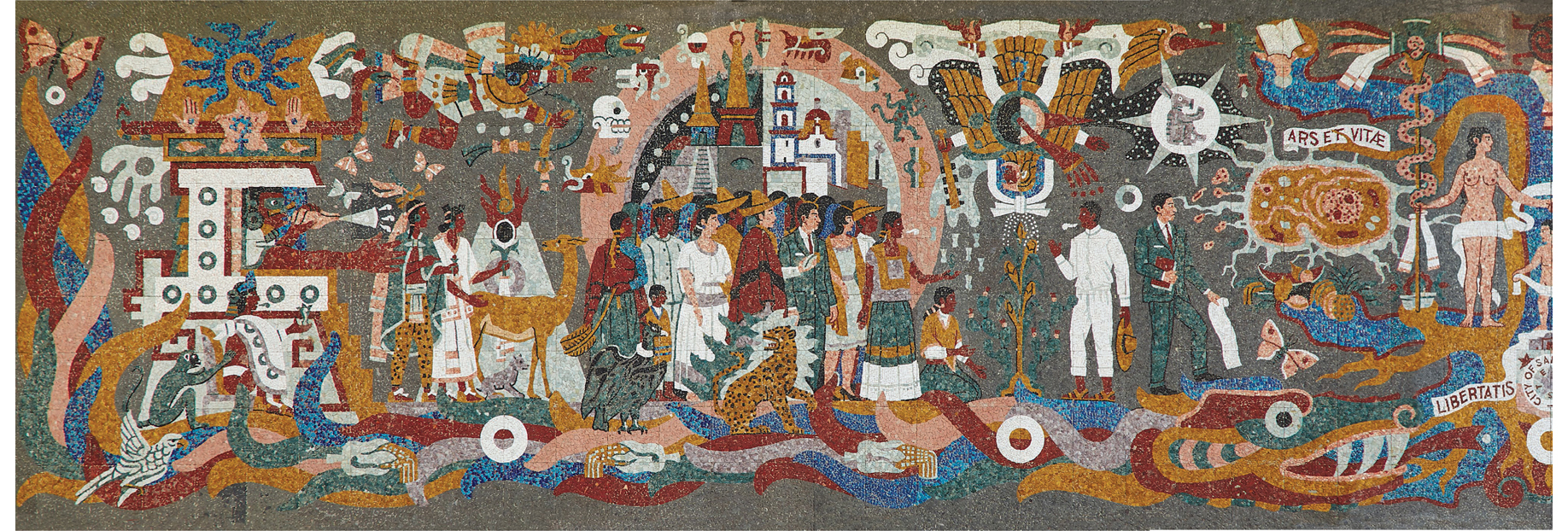
The left side of the Confluence of Civilizations in the Americas mural by Juan OGorman reflects early Mesoamerican culture.
I believe that we are all creatures of history;
We do not live in a world without roots.
JUAN OGORMAN
Quetzalcatl, the plumed serpent, resplendent in his cloak of colored feathers and jade, ancient god of Mesoamerica, undulates across the landscape. He embodies the spirit and culture of Latin America. With no effort, he transforms into Ehecatl, the wind god, and bellows through his conch shell, delivering knowledge to future generations, trumpeting the sacred voice of religion and art to his world. He has helpers for this supernatural taska remarkable array of creatures and characters. A monkey and a white parrot accompany him; black butterflies hover; and a mysterious woman, who holds an obsidian mirror made of dark volcanic glass, peers into the future. There is magic in the air; something extraordinary is about to happen.
Mythologies from the Olmec, Aztec, and Maya cultures blend. Figures from the ancient Mexican calendar, the tonalpohualli, join the dancean eagle, a human skull, a condor, a jaguar, a moon, an open book, and luscious fruits add to the mystery. Architect, artist, and muralist Juan OGorman invites us to embrace a remarkable confluence of civilizationsto explore the magic, and to follow Quetzalcatl, the serpent-monster, on an adventure that stretches across 130 feet of mosaic stones carefully collected by the artist, who traveled throughout Mexico for six months seeking just the right colors to capture his story.
From the other side of the mosaic mural, another drama begins in ancient Macedonia; and those characters and creatures are working their way toward the center as well. The mighty Greek god Zeus travels past sacred temples, accompanied by creatures of his owna snake (symbol of science and medicine), a horse (representing transportation), and an ibis (symbolic of writing, mathematics, measurement, and time, as well as magic and the moon). The expedition to the center continues, past the influences of Europe, the Industrial Age, and religion.
Both stories begin in the ancient past; and they take us to the present, and perhaps the future. They are connected by a great riverthe universal symbol of transformation, change, and growthflowing across the bottom of the mural, glittering blue in the Texas sun.
According to scholars, Quetzalcatls richly colored feathers and jade rings represent the very core of Latin America. As early as 900 B.C., the feathered serpent god appears on a stela at an Olmec ceremonial site; and ancient codices document Quetzalcatls importance. More recently, modern exhibits at the Los Angeles County Museum of Art and the Dallas Museum of Art have explored his role as the founder of the Nahua, Mixtec, and Zapotec kingdoms in southern Mexico. The hovering butterflies in the mural are also powerful symbols in the pre-Columbian world, representing the fearsome goddess Itzpapalotl, ruler of the Aztec calendar. She carries obsidianthat black, lustrous, sacred stone that is associated with the night and her magic; and it is part of the gleaming dreamscape. And in the world of ancient Greece and Rome, Zeus is the god of the sky, the father of gods and men, the guardian of political order and peace. He wields a mighty thunderbolt, and like the gods of Latin America, an eagle accompanies him.
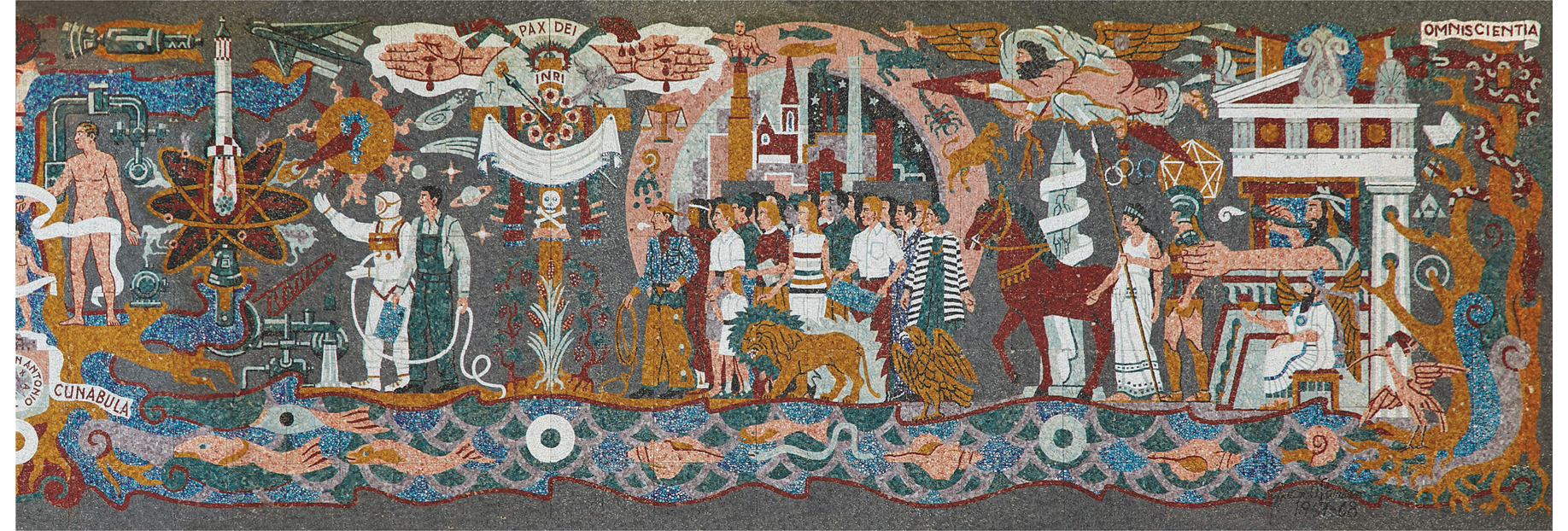
The right side of the mural reflects ancient Macedonian culture.
While Quetzalcatl travels through ancient Mesoamerica and beyond, Zeus journeys through the landscapes and symbols of the Mediterranean and Europeboth creatures of history, representatives of the very roots of their civilizations. And somewhere along their paths, cultures collide and blend, in a confluence of civilizations.
Today our world continues to experience the confluence, at an ever-increasing speed. We are global citizens; and our roots reach back to ancient origins. Somewhere within, perhaps, we still hold the archetypical images of those long-ago places that have influenced who we are.
Come explore. Journey with artist Juan OGorman through twentieth-century Mexico. His extraordinary murals were a voice for social justice and economic reform following the Revolution of 1910, his buildings pioneered modern architecture in Latin America, and his paintings helped shape artistic expression internationally. Plunge into his surreal, magical dreamscapes; discover the past; consider the implications for the present and future. The adventure begins in the mountains of central Mexico, at the start of the twentieth century, as the first whispers of revolution were heard in the wind... perhaps carried by Ehecatl himself.


